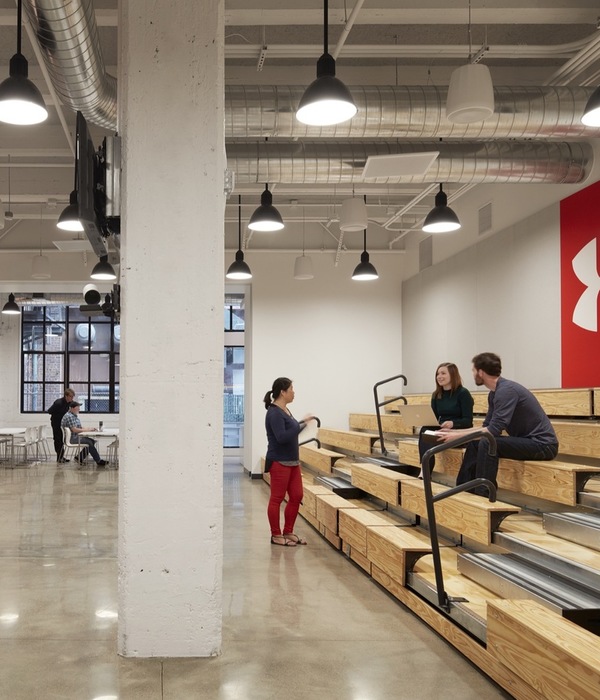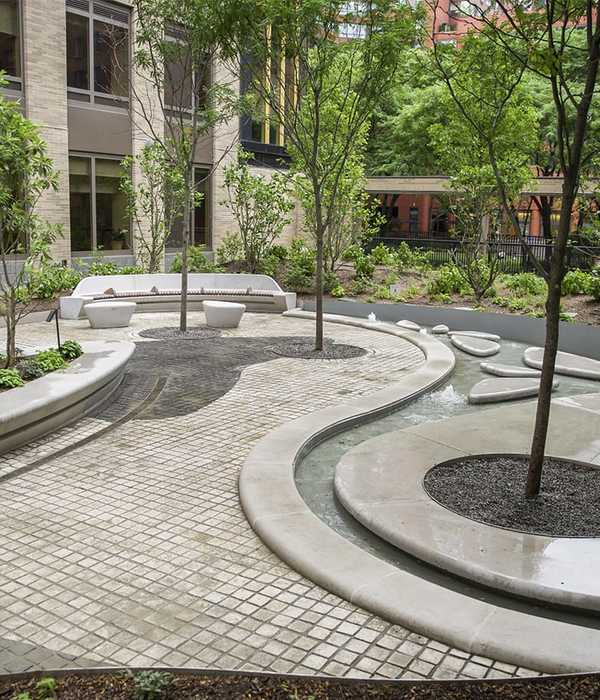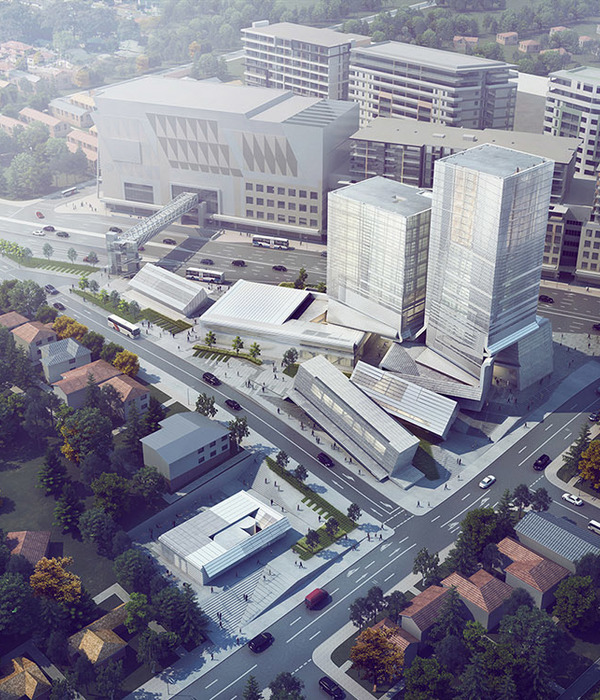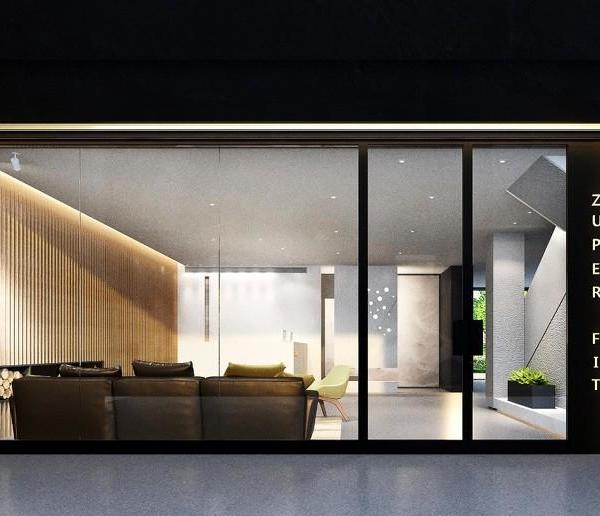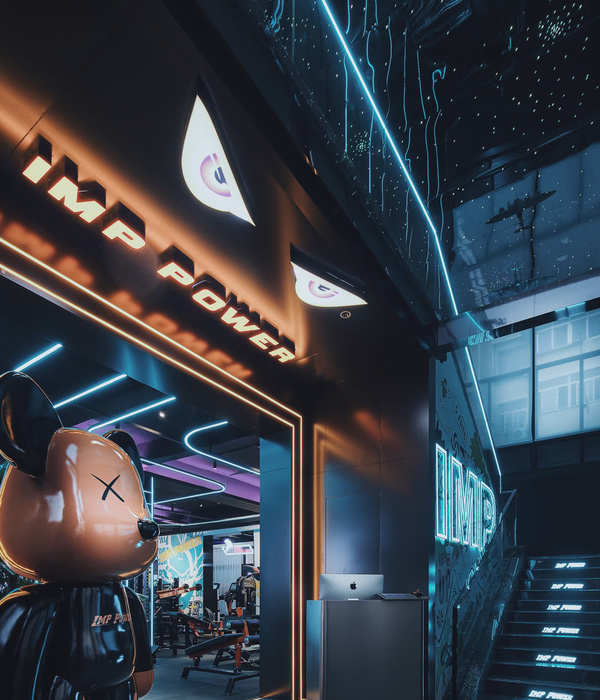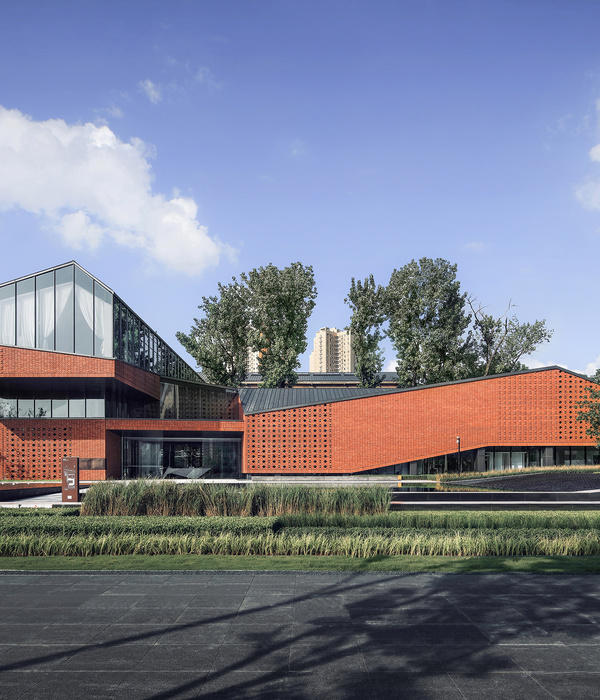篮子的带孔表面最大程度地减少了内部与外部空间的阻隔,使光线得以从中穿过。人们从展亭内部感受着空间之外的日与夜,在灯光的作用下,时间的流逝仿佛比平时更加明显。
▼夜景,Night view © Hyunjejoo_Baukunst
The project is not about the “right” or “wrong” ways of using objects, but rather about highlighting their affordances or meanings. We say the intent is to create an economical, flexible, light, and recyclable flexible element. These small but attractive and functional structures reveal the potential in the world of architecture to adapt to environmental needs.
这个项目并不是在探讨使用物品的方法是对是错,而在于如何挖掘和激发物品的潜能和意义。它的目的是创造一种更加经济、灵活、轻盈和可回收的结构。正是这些小巧的、同时具有吸引力和功能性的结构,向我们揭示了为适应环境需求而建造的可能性。
▼细节,Detailed view © Hyunjejoo_Baukunst
▼灯光效果,Lighting effect © Hyunjejoo_Baukunst
The surface minimizes the separation between the inside and outside, light and silhouettes beyond the space show through. This surface maximizes the separation between the old and new surface, day and night beyond the space show through. The passage of time is more actively sensed from both inside and outside, as these light effects stimulate our senses.
▼视频:Video © Hyunjejoo_Baukunst
这座位于韩国大邱的临时展亭是用回收和再利用的材料建造而成。
▼半透明篮子构成的空间,A space created with semi-transparent baskets © Hyunjejoo_Baukunst
As a flexible element rather than a fixed element, a Pavilion consists of 1,300 structural semi-transparent basket surfaces. A relatively standard commercially available basket was reused as a pavilion, and we intend to reuse the individual 1,300 baskets upon dismantling the installation.
展馆由1300个市场上常见的半透明篮子组成,它呈现为一个灵活而非固定的元素,在装置拆除之后,所有的篮子都将得到重新利用。
▼展亭外观,Exterior view © Hyunjejoo_Baukunst
What if the materials with which we surround ourselves asked us to be more conscientious about how we use them? The project is about providing a new perspective on the everyday.
The temporary Pavilion is in dae-gu, south Korea. Pavilions are created with recycled and repurposed materials.
如果生活中随处可见的材料向我们提出“认真使用它们”的要求,我们会如何去做?对于这个问题,设计师Hyunje Joo提出了一个基于日常的新视角。
{{item.text_origin}}

